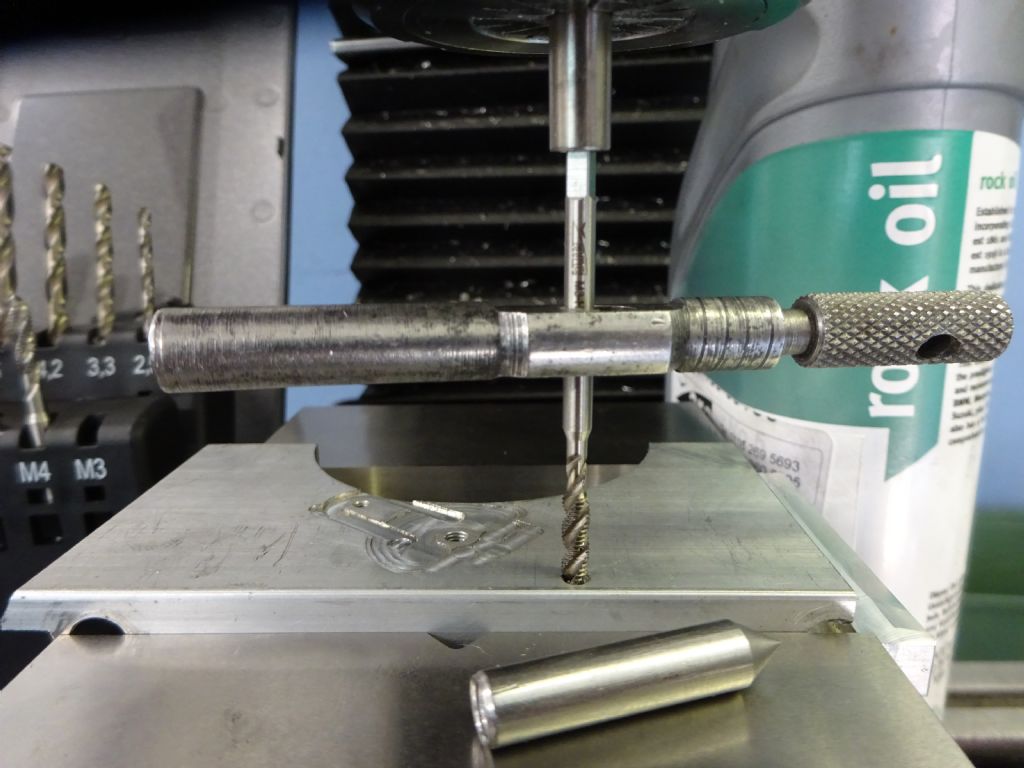Hi Jason,
Well I'm not saying anything is the best option (did I actually imply that?) but that as always, one has to bear in mind what kit someone has at their disposal. Whilst I have the means to reverse on both mills that I have both have to be switched at the control panel which unlike your button control makes things a bit fraught. Besides, on one, the Linley, the quill is not lever driven so it would mean trying to wind out at the same rate as the tap comes out. Fine if you are careful on the way in for a few initial threads but a most definite no no on retraction. If the tap was in some kind of sliding spindle of course that would be a different matter. On the other, Amadeal, mill the quill is just too heavy to feel small taps under say 2BA without a real degree of caution. Even then the same issue of control applies – lever on the right, control on the left
As you implied previously if DRO is available then that is a good and much better way to go too. In fact I've just done the flange holes in the Marine Compound in exactly that manner
As I approach my eighties however buying new kit, unless a required direct replacement, is not really viable as I intend to dispose of it all in a couple of years or so. Though I do use metric threads from time to time, moving over to metric threads as opposed to BA, though certainly less expensive, is not something I'm keen to do at this time in life. I have sufficient stocks of BA fasteners (still readily available of course).
I've been tapping holes for few years now – other than the Tapmatic devices which really are good despite my previous statement of rarely using mine – the best system I've ever used was a set of three large drilling pillars mounted above one big table, Meddings or possibly Pollard I think. They had a foot control to knock them into reverse which was instantaneous – wonderful bit of kit but it would require a bigger space that most have available.
I know things have moved on but I believe it's as important to show that you don't have to have modern kit to be able to do a job just as well as it is to show what's available now. Many now think of CNC pretty early on – as you know I left that behind twenty odd years ago but I've often had the comment ''Are the crankcases made by CNC'' on my diesels.
I began my model engineering as a complete amateur – zero knowledge but full of enthusiasm. In my mid thirties that quickly lead to a change of career and proper training before spending so many happy hours in a machine shop environment for the rest of my working days – like I said, quite a few tapped holes in that time – not always done on the right bit of kit 
Best – R
PS just realised I haven't responded to others – have to go out right now, Sue is standing by the door, chomping at the bit – you know how it is  so will come back later.
so will come back later.
Edited By Ramon Wilson on 15/08/2022 10:39:17
Anonymous.













